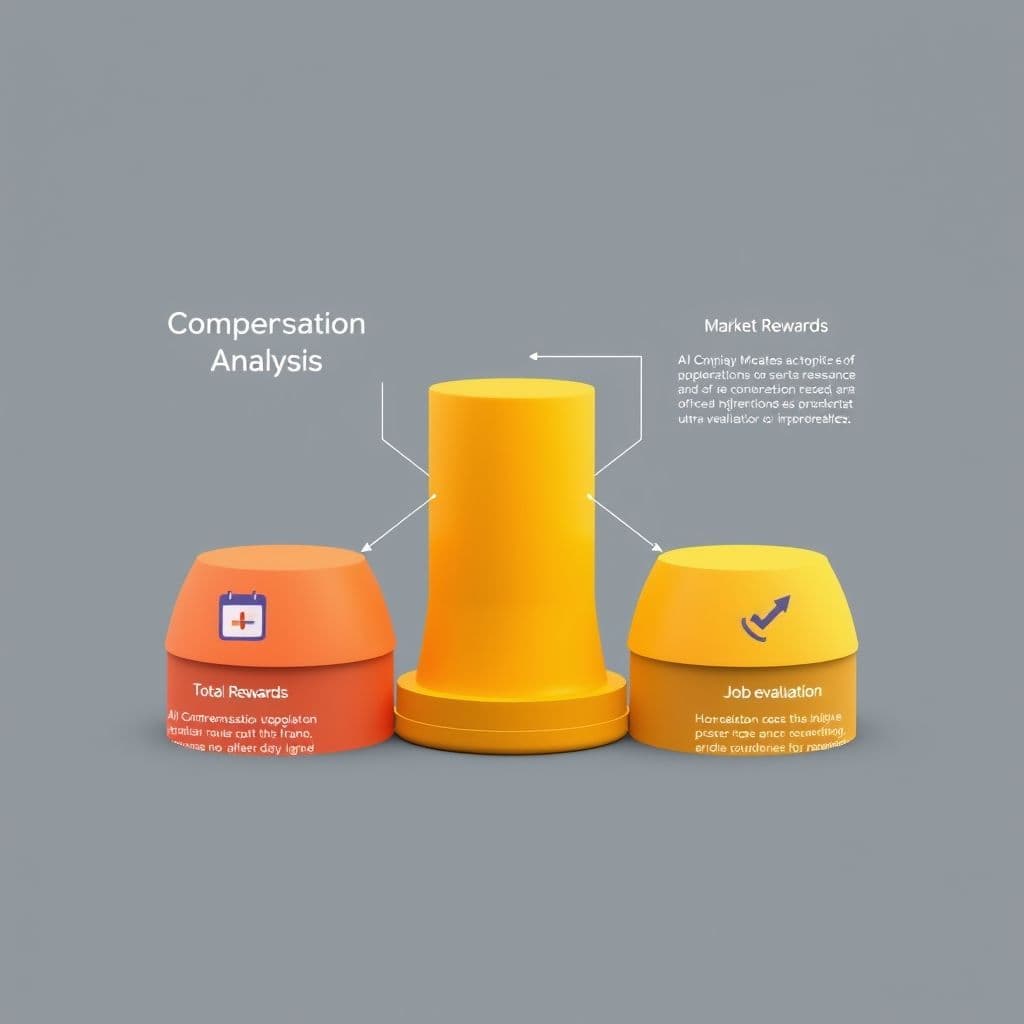Master Compensation Analysis: A Complete 7-Step Guide to Strategic Pay Equity

In today's competitive talent market, compensation analysis has become the cornerstone of successful human resource management. Whether you're an HR professional looking to ensure fair pay practices or a business leader seeking to optimize your compensation strategy, mastering compensation analysis is essential for attracting, retaining, and motivating top talent. This comprehensive skill involves understanding market dynamics, evaluating internal pay structures, and designing compensation programs that align with both business objectives and employee expectations. Throughout this guide, you'll discover the systematic approach to conducting thorough compensation analysis, from gathering market data to implementing effective pay programs that drive organizational success. View original learning path
Step 1: Understand the Basics of Compensation Analysis
Compensation analysis forms the foundation of strategic human resource management, serving as your roadmap for making informed pay decisions. At its core, compensation analysis involves systematically evaluating and comparing pay practices to ensure fairness, competitiveness, and alignment with organizational goals. This process begins with understanding total rewards, which encompasses not just base salary but also benefits, incentives, recognition programs, and career development opportunities. Market pricing becomes your compass, helping you understand how your organization's compensation compares to similar roles in the marketplace. Meanwhile, job evaluation provides the internal framework for determining the relative worth of different positions within your organization. Think of these four concepts as the pillars supporting your entire compensation strategy—without a solid understanding of each, your analysis lacks the depth needed for strategic decision-making.

Step 2: Learn about Compensation Surveys and Data Sources
Compensation surveys are your window into the external market, providing the critical data needed to make competitive pay decisions. These surveys collect salary and benefit information from multiple organizations, creating benchmarks that help you understand prevailing market rates. The key lies in identifying reliable data sources—from established survey providers like Mercer and Hay Group to industry-specific associations and government databases. Survey participation is often reciprocal; many organizations contribute their data in exchange for access to aggregated results. When analyzing this data, focus on understanding sample sizes, geographic scope, and industry representation to ensure relevance to your organization. Remember that data quality directly impacts decision quality—invest time in understanding survey methodologies and participating in reputable surveys that align with your industry and geographic footprint.
Step 3: Develop Job Descriptions and Job Evaluation Methods
Accurate job descriptions serve as the foundation for all compensation analysis activities, providing detailed documentation of roles, responsibilities, and requirements. These descriptions must be current, comprehensive, and consistent to ensure reliable job matching in market surveys. Job evaluation methods help you determine the relative worth of positions within your organization, creating internal hierarchy and pay relationships. Job ranking, the simplest approach, involves ordering positions from highest to lowest value, while point factor evaluation uses multiple compensable factors like knowledge, responsibility, and working conditions to assign numerical values to positions. The method you choose depends on your organization's size, complexity, and resources. Consistency in application is crucial—establish clear evaluation criteria and train evaluators to ensure reliable, defensible results that support your compensation structure.

Step 4: Conduct Market Pricing and Benchmarking
Market pricing transforms your job evaluation foundation into competitive intelligence by comparing your positions with external market data. This process involves matching your internal jobs to survey positions, requiring careful analysis of job content, scope, and requirements. Benchmarking extends beyond simple salary comparisons to include total compensation analysis, examining base pay, incentives, benefits, and other rewards. When establishing salary ranges, consider your organization's competitive position strategy—whether you aim to lead, match, or lag the market in different job categories. Competitive analysis should account for factors like company size, industry, geography, and performance requirements. The goal is creating salary ranges that provide flexibility for individual pay decisions while maintaining internal equity and external competitiveness.
Step 5: Analyze Internal Pay Equity
Internal pay equity ensures fair compensation relationships within your organization, addressing both legal compliance and employee satisfaction concerns. This analysis examines pay structure consistency, identifying potential disparities based on protected characteristics or other factors unrelated to job performance or qualifications. Pay grades create logical groupings of similar-value positions, providing structure for career progression and pay administration. Salary compression occurs when pay differences between job levels become minimal, often requiring systematic correction to maintain appropriate pay relationships. Regular equity analysis helps identify and address potential issues before they become legal or morale problems. Use statistical analysis tools to examine pay patterns, but remember that numbers alone don't tell the complete story—investigate outliers and consider legitimate business reasons for pay differences.
Step 6: Design and Implement Compensation Programs
Effective compensation programs translate your analysis into actionable pay strategies that support business objectives while meeting employee needs. Base salary forms the foundation, providing steady income that reflects job value and individual contribution. Incentive plans add variable components tied to performance, goals, or business results, creating motivation for exceptional performance. Benefits complete the total rewards package, addressing diverse employee needs from healthcare to retirement security. Successful program design requires balance—between fixed and variable pay, individual and team incentives, short-term and long-term focus. Implementation demands clear communication, consistent administration, and ongoing monitoring. Consider gradual rollouts for major changes, providing training for managers and transparent explanations for employees about how the new programs work and why they benefit everyone.

Step 7: Monitor and Evaluate Compensation Effectiveness
Compensation effectiveness monitoring ensures your programs deliver intended results and adapt to changing business needs. Key metrics include turnover rates by job level and department, time-to-fill positions, employee satisfaction scores, and cost-per-hire statistics. Analytics help identify trends and patterns that inform program adjustments—perhaps certain roles show consistently high turnover despite competitive pay, suggesting other factors at play. Performance management integration ensures compensation decisions align with contributions and results, creating clear links between pay and performance. Employee satisfaction surveys provide critical feedback about perceived fairness and competitiveness of your programs. Regular evaluation cycles—typically annual or bi-annual—allow systematic review and adjustment of compensation strategies. Remember that effective monitoring is proactive, not reactive; establish early warning indicators that signal when intervention may be needed.
Conclusion
Mastering compensation analysis is a journey that combines analytical rigor with strategic thinking and human insight. By following these seven steps, you've built a comprehensive framework for making informed compensation decisions that support both organizational success and employee satisfaction. Remember that compensation analysis is not a one-time activity but an ongoing process that requires regular attention and adjustment. The most successful practitioners develop a systematic approach, stay current with market trends, and maintain focus on fairness and competitiveness. As you apply these skills, you'll find that effective compensation analysis becomes a powerful tool for attracting top talent, reducing turnover, and building a motivated workforce that drives business results.
Frequently Asked Questions
- How long does it take to master compensation analysis?
- Developing proficiency in compensation analysis typically takes 6-12 months of consistent practice and study. However, mastery is an ongoing process that evolves with market changes and organizational needs. Start with the basics and gradually build complexity as you gain experience with real-world applications.
- What are common mistakes beginners make in compensation analysis?
- Common pitfalls include relying on outdated or inappropriate market data, overlooking internal equity issues, focusing solely on base salary while ignoring total rewards, and making changes without proper communication. Always validate your data sources, consider both external competitiveness and internal fairness, and ensure transparent communication throughout the process.
- What tools and software are essential for compensation analysis?
- Essential tools include HRIS systems for internal data, survey databases like PayScale or Glassdoor for market data, Excel or specialized compensation software for analysis, and statistical tools for equity analysis. Many organizations also use job evaluation software and benchmarking platforms to streamline their processes.
- How often should compensation analysis be conducted?
- Most organizations conduct comprehensive compensation analysis annually, with market pricing updates every 12-18 months. However, monitor key indicators quarterly and be prepared to conduct ad-hoc analysis when significant market changes occur or when specific issues arise, such as high turnover in critical roles.





